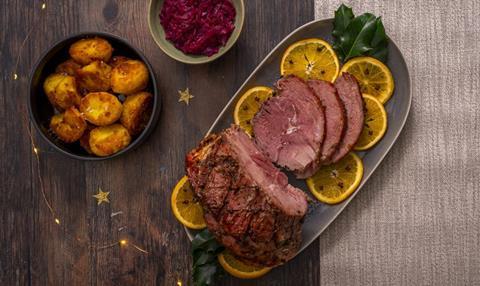Quality Meat Scotland (QMS) has released data regarding consumer spending on fresh red meat over the festive period, reporting sales of £656.2 million in the four weeks to Christmas 2023.

According to data from Nielsen, the spending was a 9.6% increase compared to the previous year. QMS described the growth as "remarkable", saying that it had "defied the challenges of price inflation" and indicated a "notable shift" in household spending towards red meat products.
“The fresh red meat market in Great Britain experienced a gradual growth trend in the lead-up to Christmas, with a substantial surge in sales during the final week, accounting for approximately 35% of total sales over the four-week period,” noted Abby Tong, category specialist at QMS.
Increased volume sales also contributed to spending growth, showing a 2% year-on-year increase and reversing the decline seen at Christmas 2022. Sausages, lamb and beef were the top contributors to the overall volume increase, with lamb notably rebounding from a sales slump in 2022 with a year-on-year volume growth of 12%.
Tong said: "It's great to see lamb recovering from the impacts of price inflation and the perception that it is an expensive protein which had been dampening sales. The outstanding performer within the fresh lamb category was the lamb leg."
Beef continued to dominate the fresh red meat category, with volume sales increasing by 2.1% year-on-year. Sales growth was primarily driven by beef roasting joints, with burgers and meatballs contributing a small share.
In contrast, fresh pork experienced a decline in volume sales, dropping by 4.2% as past price increases still resulted in "significant year-on-year price inflation". QMS said that domestic pork production had also fallen sharply, causing limited availability.
Festive centrepieces such as beef roasting joints and lamb leg roasts saw substantial increases in volume, up 11.7% and 18.7% respectively.
"Beef roasting joints and lamb leg roasts average prices were 3-4% lower than the previous year, which may, in part, explain the volume rises," added Tong. "Gammon joints were significantly cheaper than beef roasts and lamb legs, but volumes sold over the holidays were down 1.8% on the previous year, so price is not the only factor."
Festive red meat sales up in Scotland
QMS reported that the spend on fresh red meat in Scotland demonstrated robust growth, with an 8.5% year-on-year increase in the four weeks leading up to Christmas. Volumes of red meat purchased also experienced a rise, increasing by 2.6% but remaining 0.9% behind 2021 levels.
"Beef and sausages played crucial roles in driving the overall volume increase," said Tong. "While lamb recorded a more modest increase of 0.5%.
"Fresh beef volume sales in Scotland were up 3.7% on 2022 figures while continuing significant year-on-year price inflation meant that fresh pork volume sales were down 3.4%."
In Scotland, beef roasting joints saw volume sales increase by 12%. Lamb legs also experienced growth, with sales increasing by 8.4%, while gammon joints gained volume growth of 4.3%.
"A distinctive aspect of the Scottish market was the importance of beef steaks during Christmas. A volume share of 6.4% of total red meat sales equalled that of beef roasts and was a higher share than in GB as a whole, where roasts are still preferred to steaks. The volume of beef steaks sold increased by 2.3% year-on-year in Scotland.
"The red meat market demonstrated healthy resilience at Christmas," said Tong. "Despite having to navigate budget constraints in the face of ongoing price inflation, shoppers clearly still wanted to treat themselves and their families to high quality, nutritious and tasty red meat products. The Scottish market showed a keen eye on both traditional favourites and unique regional choices."
This story was originally published on a previous version of the Meat Management website and so there may be some missing images and formatting issues.















